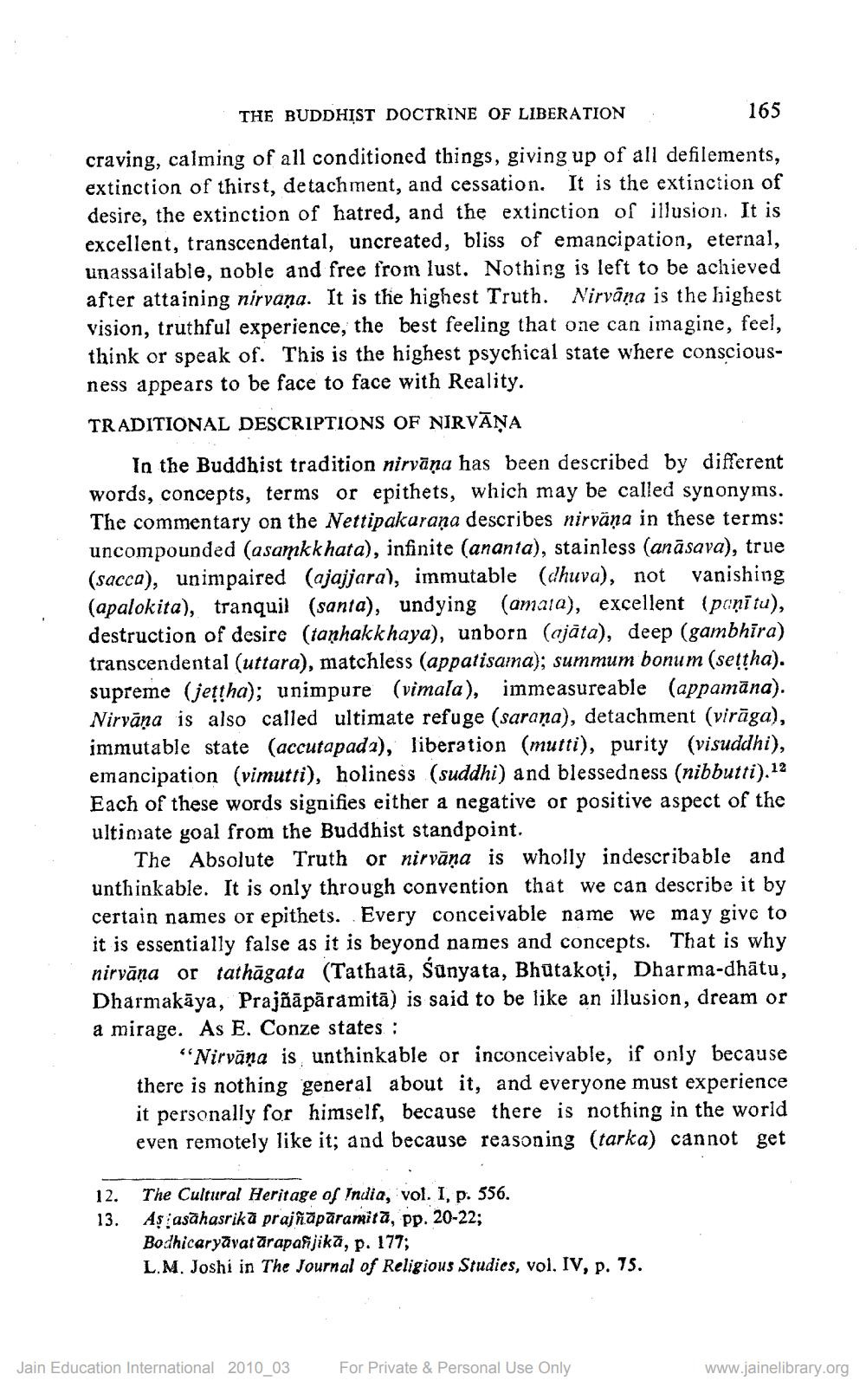________________
THE BUDDHIST DOCTRINE OF LIBERATION
craving, calming of all conditioned things, giving up of all defilements, extinction of thirst, detachment, and cessation. It is the extinction of desire, the extinction of hatred, and the extinction of illusion. It is excellent, transcendental, uncreated, bliss of emancipation, eternal, unassailable, noble and free from lust. Nothing is left to be achieved after attaining nirvana. It is the highest Truth. Nirvana is the highest vision, truthful experience, the best feeling that one can imagine, feel, think or speak of. This is the highest psychical state where consciousness appears to be face to face with Reality. TRADITIONAL DESCRIPTIONS OF NIRVĀŅA
In the Buddhist tradition nirvāņa has been described by different words, concepts, terms or epithets, which may be called synonyms. The commentary on the Nettipakarana describes nirvana in these terms: uncompounded (asamkkhata), infinite (ananta), stainless (anāsava), true (sacca), unimpaired (ajajjara), immutable (dhuva), not vanishing (apalokita), tranquil (santa), undying (amata), excellent (paṇītu), destruction of desire (tanhakk haya), unborn (ajāta), deep (gambhira) transcendental (uttara), matchless (appatisama); summum bonum (seṭṭha). supreme (jeṭṭha); unimpure (vimala), immeasureable (appamāna). Nirvana is also called ultimate refuge (sarana), detachment (virāga), immutable state (accutapada), liberation (mutti), purity (visuddhi), emancipation (vimutti), holiness (suddhi) and blessedness (nibbutti).12 Each of these words signifies either a negative or positive aspect of the ultimate goal from the Buddhist standpoint.
The Absolute Truth or nirvana is wholly indescribable and unthinkable. It is only through convention that we can describe it by certain names or epithets. Every conceivable name we may give to it is essentially false as it is beyond names and concepts. That is why nirvāṇa or tathāgata (Tathata, Sunyata, Bhutakoți, Dharma-dhātu, Dharmakaya, Prajñāpāramitā) is said to be like an illusion, dream or a mirage. As E. Conze states:
"Nirvana is unthinkable or inconceivable, if only because there is nothing general about it, and everyone must experience it personally for himself, because there is nothing in the world even remotely like it; and because reasoning (tarka) cannot get
12.
The Cultural Heritage of India, vol. I, p. 556.
13. As asahasrika prajñāpāramitā, pp. 20-22;
165
Bodhicaryavatarapaħjikā, p. 177;
L.M. Joshi in The Journal of Religious Studies, vol. IV, p. 75.
Jain Education International 2010_03
For Private & Personal Use Only
www.jainelibrary.org




